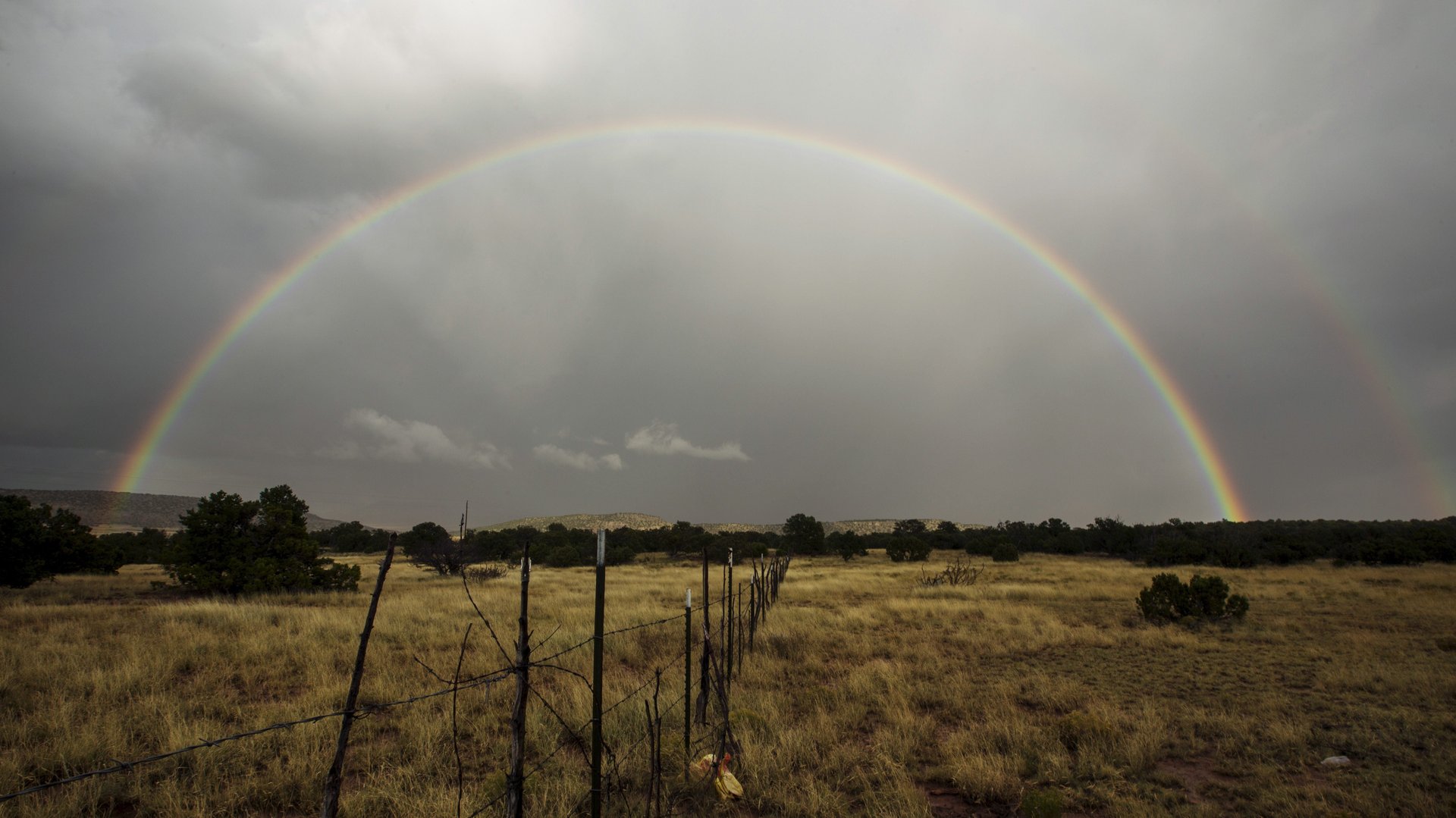Farmland could be used to sustainably offset America’s entire carbon footprint—if the will exists
Amid the roaring debate on how to curb climate change in Bonn last year, an impasse was finally broken on agriculture. Both a cause and casualty of climate change, our food system accounts for up to 24% of greenhouse gas emissions.


Amid the roaring debate on how to curb climate change in Bonn last year, an impasse was finally broken on agriculture. Both a cause and casualty of climate change, our food system accounts for up to 24% of greenhouse gas emissions.
Yet hit by soaring temperatures and more frequent extreme weather, farming is becoming more difficult, as demand continues to increase.
Positive agricultural interventions could achieve up to 6% of reduction emissions needed to achieve the Paris Agreement goals—showing that this sector is not only part of the problem, but part of the solution to climate change.
Previously at climate talks, disagreement focussed on whether helping farmers adapt to climate change, or reducing the greenhouse gases produced by the sector should be prioritized, largely along developing vs. developed country lines.
Developed countries, already equipped with successful techniques for ramping up agricultural production, are more interested in mitigation, making existing techniques more climate-friendly. On the other hand, in developing countries, drought, floods, and hurricanes all play havoc with the mostly smallholder-driven agriculture sector. Their priority is to help those farmers adapt and find food security.
In Bonn at the latest round of climate talks, a compromise was reached to allow two technical bodies to work together to identify solutions on how the agriculture sector can be a part of the solution. The question is: where to begin? How can we rein in emissions in agriculture, while making farmers more resilient to the whims of the weather?
One solution stands out. Eighty-nine percent of agriculture’s future mitigation potential could lie in capturing carbon on farmland soils: carbon sequestration. Not only does this process suck harmful carbon out of the atmosphere, it makes soils healthier and more fertile for future food production, boosting resilience to climate change.
🎧 For more intel on sustainable farming, listen to the Quartz Obsession podcast episode on kudzu. Or subscribe via: Apple Podcasts | Spotify | Google | Stitcher.
Soil carbon sequestration should make both sides of the mitigation vs. adaptation debate happy. Efforts to capitalize on this win-win solution need to be stepped up—and now. To do this, we needed to determine which areas in the world could contribute which quantities of carbon sequestration.
A new paper published in Scientific Reports tells us just that. Findings show that the world’s farmland soils have the technical potential to offset as much carbon as the United States emits, if they are managed better. This would also be equal to removing all the carbon from the atmosphere that the transport sector emits each year.
The analysis focused on croplands, which make up about one-third of agricultural lands globally. The results show that North America has the highest potential for soil carbon storage. So how can American farmers take action?
New technology means soil health can be managed at much finer scales than has been possible previously. For example, American companies are embracing precision agriculture, investing in sensors and camera-equipped drones that can send information on soil health and moisture wirelessly to a computer.
This type of technology could allow farmers to find out exactly which type and quantity of fertilizer to apply in which area of the farm to reach the optimum level of soil health, improving the soil’s capacity to trap carbon.
Other methods are simpler: reducing use of heavy machinery to till land; mulching or covering the soil with already harvested maize stalks to protect the surface. These options can all keep more carbon in North American soils and improve productivity.
These practices work in other parts of the world too. Africa, with its large area of croplands (~2.6 million km2), has high potential for soil carbon storage—although equipping farmers to step up carbon sequestration efforts will be more difficult in these areas, because they require scarce labor resources, and extension services are more constrained.
Yet there are many other options to consider. Pasture lands in Africa often have low productivity, so using improved forage varieties and mixing legume plants into pasture vegetation can increase soil carbon storage – while having the added benefit of increasing live weight gain of livestock.
Agroforestry—planting trees on farmland—is also a promising option in Africa, particularly since some trees are actually able to fix nitrogen to the soil. It also helps farmers diversify their production, improving their diet and making them less vulnerable to shocks.
At the International Center for Tropical Agriculture, we are working on a number of tools to help investors and other decision makers assess which efforts are best placed to restore degraded land in specific areas. The Soil Organic Carbon app, for example, can calculate the amount of organic carbon that could be sequestered in the soil, based on soil organic carbon concentration and the impact of soil protection practices on sequestration over time and at different scales.
But there is more research to be done. The evidence overwhelmingly shows that agriculture increasingly supports solutions to tackle both food security and environmental goals. What we need now is a united effort to prevent the world’s soils from remaining an untapped carbon sink.
It is time to unlock its vast potential to roll back emissions, ensure food security, and put us on a more sustainable path towards climate stability.